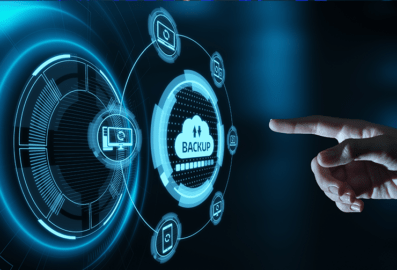Once, the Cloud was seen as a consumer-focused technology, with businesses being reluctant to run their mission-critical systems from third-parties’ remote servers. No longer: cloud technology has now become central to most businesses’ IT strategies. Stand by for more change, though: three emerging cloud trends are set to accelerate cloud adoption even faster.
And my view is that they will do so sooner than many businesses might imagine. The adoption of cloud technologies has become mainstream as businesses adapt to a COVID-19 compatible way of working. In short, the Cloud is already transforming how businesses operate.
The winners will be those businesses that prepare accordingly. The losers? Those scrambling to play catch-up while nimbler competitors exploit and profit from new cloud-based capabilities.
The three cloud trends in question? Let’s take a look.
‘Bring your own device’ goes mainstream
Until a few years ago, corporate IT departments exercised tight control over exactly which devices were connected to the corporate network. But with the arrival of low-cost smart devices, that became impossible to police.
Apple phones and tablets, Android phones and tablets, employees working from home or logging-in on a weekend from a home computer to check their e-mail—suddenly, corporate IT departments found themselves dealing with an explosion of device connections.
‘Bring your own device’ (BYOD) had arrived. And to corporate IT departments’ surprise, it wasn’t as disruptive or insecure as had been feared. Employees loved the freedom of connecting with their own devices—and productivity soared.
Post-coronavirus, BYOD will be part of the new normal. Remote working and home working will become part of how things are done, with cloud capabilities providing the ‘glue’, delivering a virtual workplace, together with collaboration tools such as e-mail, file-sharing, and video conferencing. Google’s G-Suite, Microsoft’s Office 365, Microsoft Teams, Slack, Salesforce.com, Oracle’s NetSuite, Cisco’s Webex—all are cloud-based, and all happy to connect to a BYOD universe.
Multi-cloud and hybrid-cloud architectures will become more common
Take another look at the list immediately above. The chances are good that if your business doesn’t use at least one or two of those cloud-based services, then it uses one or two of their competitors.
What’s more, such systems aren’t standalone: almost always, they are tightly integrated with the rest of the corporate IT landscape. Which means two things.
First, multi-cloud connectivity is becoming more commonplace—Microsoft’s cloud is different from Google’s cloud, and different again from Salesforce.com’s cloud or Oracle’s cloud. Yet a business might want to connect to all of them.
And second, hybrid-cloud is becoming commonplace, as well. Because businesses’ IT systems aren’t yet fully cloud-based, and may never be. Meaning that all of these different cloud-based systems will need connecting to businesses’ on-premise platforms.
Yet not so long ago, using even one cloud-based system was considered unusual.
Disaster recovery, as a subscription service
It’s often said that while disaster recovery preparations are expensive, they’re a lot less expensive than losing your data. That can kill a business—and each year, does so.
The era of backup tapes and duplicate systems is fast receding. The uptake of cloud-based backup, and cloud-based hosted duplicate systems, is accelerating. According to Market Research Future (MRFR), the market is predicted to record a growth rate of 44% by 2023.
Solutions vary, but the basic idea is the same: take away the need to remember to do a daily or weekly backup, and simply backup everything automatically, perhaps with ‘failover’ capabilities in the event that disaster did strike.
Once, only corporate giants could afford this. Soon, it will be commonplace. Why wait for disaster to strike before making the move?

The bottom line: is your network fit-for-purpose?
All of this is fairly unarguable. Look around, and you can see it happening. As consumers, we all happily use cloud-based services—think Google, Facebook, Twitter, YouTube, eBay and so on—and businesses are going the same way.
But in the business world, the network effects of all this will be amplified.
There will be many more people connecting more intensively, and making use of capabilities such as video-conference and collaboration tools. Those enterprise systems, too, will impose significant bandwidth loads on networks. Cloud-based software and disaster recovery systems have sizeable bandwidth footprints.
So it’s important to make sure that your network can cope, and that your connections to cloud-based systems aren’t throttled back and artificially constrained. Cloud capabilities are powerful—but not when they are slowed to a crawl.
At Aspire we offer a wide range of connectivity, Cloud and managed cyber security services, and our team of experts can help you to identify which would be the right option for your business.



